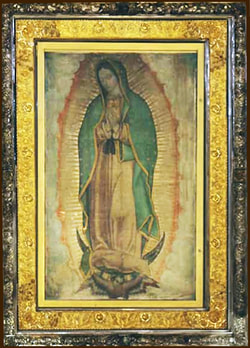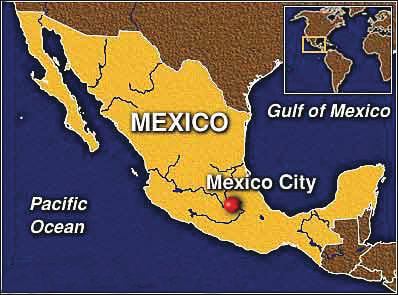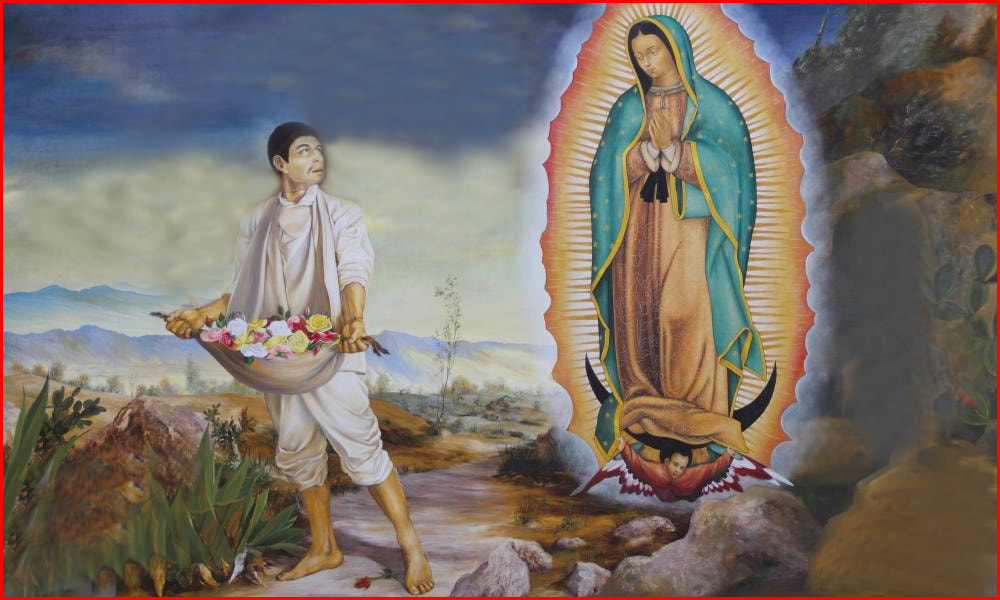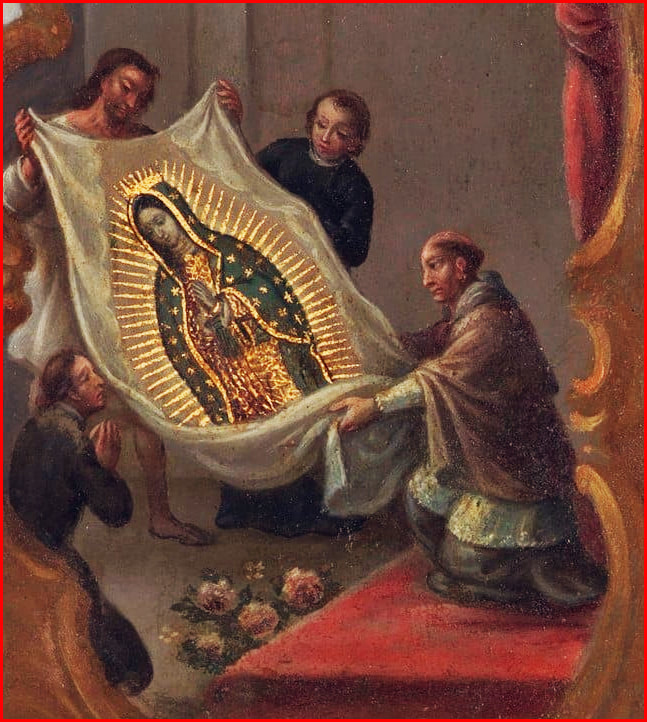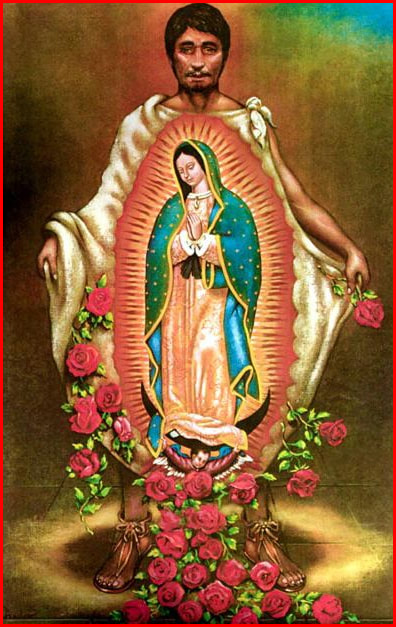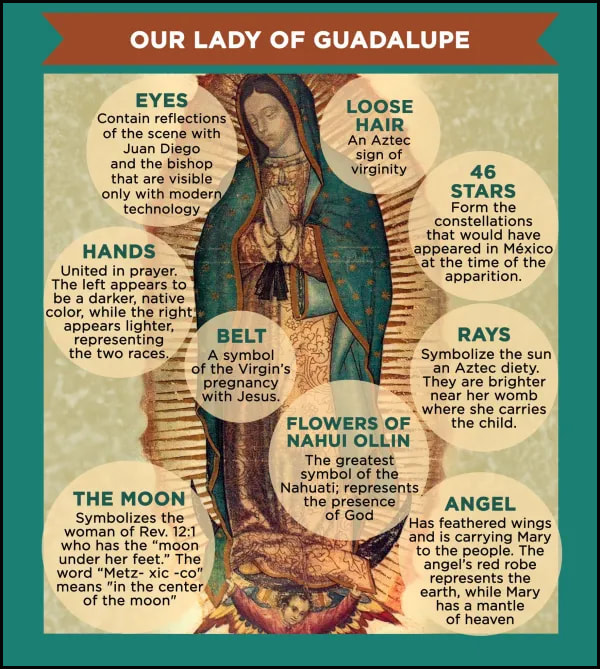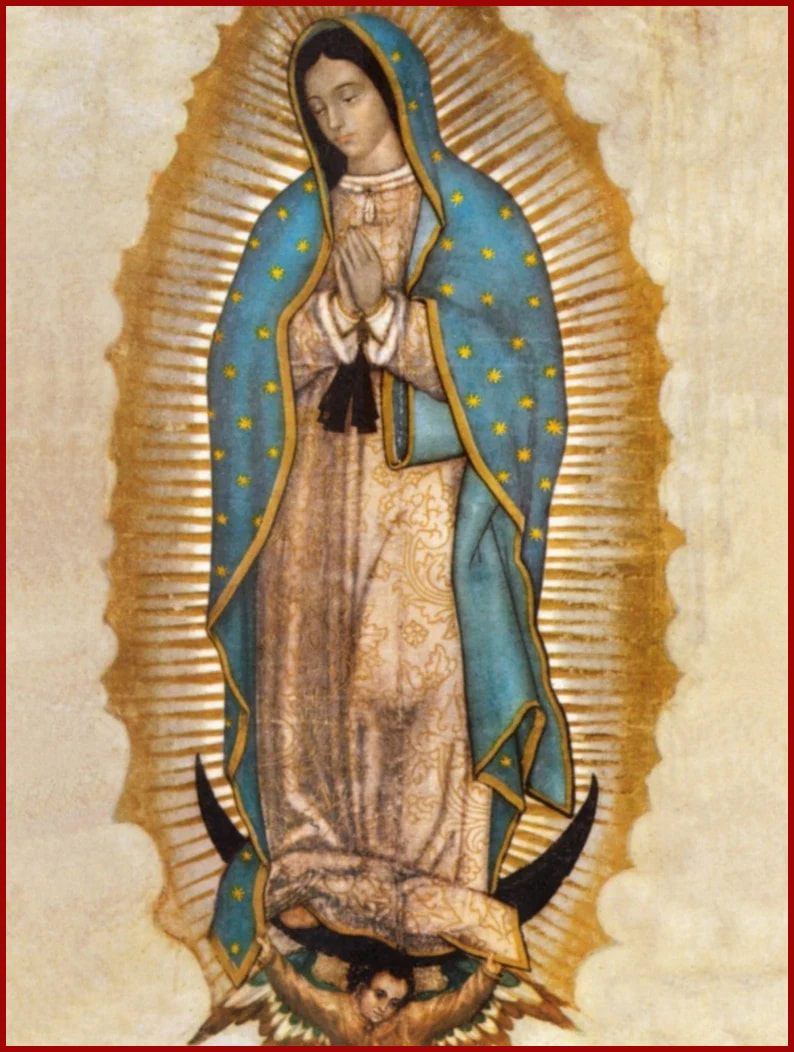| Devotion to Our Lady |
|
- Homepage
-
Daily Thoughts
- 2023 October Daily Thoughts
- Daily Thoughts Lent 2020
- Daily Thoughts for Advent 2019
- Daily Thoughts for October 2019
- Daily Thoughts for September 2019
- Daily Thoughts for August 2019
- Daily Thoughts for July
- Daily Thoughts for June
- Daily Thoughts for Easter 2019
- Daily Thoughts for Lent 2019
- Daily Thoughts for Christmas
- Daily Thoughts Easter 2022
- Consecration
- Easter Season
-
Spiritual Life
- Holy Mass Explained
- First Friday Devotions
- First Saturday Devotions
- The Mercy of God
- Vocations
- The Path Everyone Must Walk >
- Gift of Failure
- Halloween or Hell-O-Ween?
- Ignatian Spiritual Exercises >
- Meditation is Soul-Saving
- Spiritual Communion
- Miraculous Medal
- Enrollment in Miraculous Medal
- St. Benedict Medal
- Holy Water
- Advice on Prayer
- Your Daily Mary
-
Prayers
- September Devotions
- Seven Sorrows of Our Lady
-
Novenas
>
- NV-Help of Christians
- NV-Nativity of Our Lady
- NV-Seven Sorrows
- NV- Sorrowful Heart
- NV-Pope St Pius X
- NV-La Salette
- NV-St Michael Archangel
- NV-Immaculate Heart
- NV-Assumption
- NV-Novena for Fathers
- NV-Novena for Your Mother
- NV-St Raphael Archangel
- NV-Souls in Purgatory
- NV-All Saints Day
- NV-Christ the King
- NV-Divine Motherhood
- NV-Guardian Angels
- NV-Rosary
- NV-Mirac Med
- NV- Imm Conc
- NV - Guadalupe
- NV - Nativity of Jesus
- NV-Epiphany
- NV-OL Good Success
- NV-Lourdes
- NV-St Patrick
- NV-St Joseph
- NV-Annunciation
- NV-St Louis de Montfort
- NV-OL Good Counsel
- NV-Last Supper
- NV-Passion
- NV-Pentecost
- NV-Ascension
- NV-Sacred Heart
- NV-Sacred Heart & Perpetual Help
- NV-Corpus Christi
- NV-OL of Perpetual Help
- NV-Queenship BVM
- NV-OL of Mount Carmel
- NV-St Mary Magdalen
- NV- Im Hrt
- August Devotions to IHM
- Immaculate Heart of Mary
- Litany of Dependence
- Prayers to St Mary Magdalen
- Prayers in Times of Sickness Disease & Danger
- Holy Souls in Purgatory
- Meditations on the Litany of Our Lady
- Special Feast Days
- Prayers to Mary (Mon-Sun)
- Litanies to Our Lady >
- Various & Special Needs
- Our Lady of the Rosary
- Our Lady of Mt. Carmel
- Our Lady of Perpetual Help
- Our Lady of Guadalupe
- Other titles of Our Lady
-
Rosary
- Downloads
-
Holy Week
- Last Seven Words of Jesus >
- Characters of Passion >
- The Last Days of Christ
- Before Palm Sunday
- Palm Sunday
- Monday in Holy Week
- Tuesday in Holy Week
- Wednesday in Holy Week
- Holy Thursday (Last Supper)
- Holy Thursday (Agony & Arrest)
- Night Vigil with Christ
- Good Friday (Pilate & Herod)
- Good Friday (Way of Cross & Crucifixion)
- Saturday in Holy Week
-
Lent
- Ideas for Lent
- Daily Lenten Planner
- Daily Lenten Liturgy
- From Cold to Hot
- Lent with Aquinas
- Lent with Dom Gueranger
- Virtues for Lent
- History of Penance
- How Expensive is Sin?
- Confession of Sins
- Letter to Friends of the Cross
- Sermons for Lent
- Stations of the Cross >
- Lenten Prayers
- 7 Penitential Psalms
- Lenten Psalms SUN
- Lenten Psalms MON
- Lenten Psalms TUE
- Lenten Psalms WED
- Lenten Psalms THU
- Lenten Psalms FRI
- Lenten Psalms SAT
- Lenten Laughs
- Septuagesima
-
Christmas
- Epiphany Explained
- Suggestions for Christmas
- Food For Thought
- Christmas with Aquinas
- Christmas with Dom Gueranger
- Christmas Prayers
- Candles & Candlemas
- Christmas Sermons
- Christmas Prayers SUN
- Christmas Prayers MON
- Christmas Prayers TUE
- Christmas Prayers WED
- Christmas Prayers THU
- Christmas Prayers FRI
- Christmas Prayers SAT
- Twelve Days of Christmas >
-
Advent Journey
- Purgatory
- Christ the King
- Legion of Mary
- Scapular
- Sacred Heart
-
Saints
-
Martyrs for the Faith
>
- Your Daily Martyr >
- All 365 Days of Martyrs
- Cristeros
- St Valentine & Valentine's Day
- Martyrs--Thomas Becket
- Martyrs--John the Apostle
- Holy Machabees
- Age of Martyrdom
- Carmelites of Compiegne
- Martyrs--Peter & Paul
- Martyrs--John the Baptist
- Martyrs--Andrew
- Martyrs--James the Great
- Martyrs--North American
- Martyrs--Seven Holy Sleepers
- Martyrs--Afra
- School of Martyrdom
- Martyrs--Christina
- Desert Saints >
- Saints for Sinners >
- Saints of Mary >
- History of All Saints Day
-
Martyrs for the Faith
>
- Precious Blood
- Holy Ghost
- Synod 2023
-
Catechism
- Catechism Lesson 1
- Catechism Lesson 2
- Catechism Lesson 3
- Catechism Lesson 4
- Catechism Lesson 5
- Catechism Lesson 6
- Catechism Lesson 7
- Catechism Lesson 8
- Catechism Lesson 9
- Catechism Lesson 10
- Catechism Lesson 11
- Catechism Lesson 12
- Catechism Lesson 13
- Catechism Lesson 14
- Catechism Lesson 15
- Catechism Lesson 16
- Catechism Lesson 17
- Catechism Lesson 18
- Catechism Lesson 19
- Catechism Lesson 20
- Catechism Lesson 21
- Catechism Lesson 22
- Bible Study
-
Calendar
- Miracles
- Apparitions
- Shrines
- Prophecies
- Angels Homepage
- Hell
-
Church Crisis
- Conspiracy Theories
- Amazon Synod 2019 >
- Liberalism & Modernism
- Modernism--Encyclical Pascendi
- Modernism & Children
- Modernism--Documents
- The Francis Pages
- Church Enemies on Francis
- Francis Quotes
- Amoris Laetitia Critique
- Danger of Ignorance (Pius X)
- Restore all In Christ (Pius X)
- Catholic Action (Pius X)
- Another TITANIC Disaster?
- The "Errors of Russia"
- CRISIS PRAYERS
- Election Novena 2024
- The Anger Room
- War Zone
- Life of Mary
- Spiritual Gym
- Stupidity
- Coronavirus and Catholicism
- History & Facts
- Books
- Catholic Family
- Children
- Daily Quiz
-
Novena Church & Pope
- Day 01 Church-Pope Novena
- Day 02 Church-Pope Novena
- Day 03 Church-Pope Novena
- Day 04 Church-Pope Novena
- Day 05 Church-Pope Novena
- Day 06 Church-Pope Novena
- Day 07 Church-Pope Novena
- Day 08 Church-Pope Novena
- Day 09 Church-Pope Novena
- Day 10 Church-Pope Novena
- Day 11 Church-Pope Novena
- Day 12 Church-Pope Novena
- Day 13 Church-Pope Novena
- Day 14 Church-Pope Novena
- Day 15 Church-Pope Novena
- Day 16 Church-Pope Novena
- Day 17 Church-Pope Novena
- Day 18 Church-Pope Novena
- Day 19 Church-Pope Novena
- Day 20 Church-Pope Novena
- Day 21 Church-Pope Novena
- Day 22 Church-Pope Novena
- Day 23 Church-Pope Novena
- Day 24 Church-Pope Novena
- Day 25 Church-Pope Novena
- Day 26 Church-Pope Novena
- Day 27 Church-Pope Novena
- Day 28 Church-Pope Novena
- Day 29 Church-Pope Novena
- Day 30 Church-Pope Novena
- Day 31 Church-Pope Novena
- Day 32 Church-Pope Novena
- Day 33 Church-Pope Novena
- Day 34 Church-Pope Novena
- Day 35 Church-Pope Novena
- Day 36 Church-Pope Novena
- Day 37 Church-Pope Novena
- Day 38 Church-Pope Novena
- Day 39 Church-Pope Novena
- Day 40 Church-Pope Novena
- Day 41 Church-Pope Novena
- Day 42 Church-Pope Novena
- Day 43 Church-Pope Novena
- Day 44 Church-Pope Novena
- Day 45 Church-Pope Novena
- Day 46 Church-Pope Novena
- Day 47 Church-Pope Novena
- Day 48 Church-Pope Novena
- Day 49 Church-Pope Novena
- Day 50 Church-Pope Novena
- Day 51 Church-Pope Novena
- Day 52 Church-Pope Novena
- Day 53 Church-Pope Novena
- Day 54 Church-Pope Novena
- Penance Novena
- Daily WeAtheR Forecast
OUR LADY OF GUADALUPE
December 12th
December 12th
LINKS TO OTHER SPECIAL FEASTS (not all links have been activated at this time)
| Nativity of Mary (Sep 8) | Seven Sorrows of Mary (Sep 15) | Our Lady of Ransom (Sep 24) | Our Lady of the Rosary (Oct 7) | Divine Maternity (Oct 11) |
| Presentation of Mary in Temple (Nov 21) | Our Lady of the Miraculous Medal (Nov 27) | Immaculate Conception (Dec 8) |
| Our Lady of Guadalupe (Dec 12) | Purification of Mary (Feb 2) | Annunciation (Mar 25) | Help of Christians (May 24) |
| Nativity of Mary (Sep 8) | Seven Sorrows of Mary (Sep 15) | Our Lady of Ransom (Sep 24) | Our Lady of the Rosary (Oct 7) | Divine Maternity (Oct 11) |
| Presentation of Mary in Temple (Nov 21) | Our Lady of the Miraculous Medal (Nov 27) | Immaculate Conception (Dec 8) |
| Our Lady of Guadalupe (Dec 12) | Purification of Mary (Feb 2) | Annunciation (Mar 25) | Help of Christians (May 24) |
|
The feast of Our Lady of Guadalupe ― “Our Lady of Guadalupe Day” or “Day of the Virgin of Guadalupe” ― on December 12th, draws millions of Catholics every year, from across Mexico and other countries, to make a pilgrimage to see the miraculous image of Mary in the Basilica of Guadalupe. It is the site of her apparitions to Juan Diego Cuauhtlatoatz in 1531, now the most visited Catholic site in the world.
Our Lady of Guadalupe―in Spanish, Nuestra Señora de Guadalupe―also called the Virgin of Guadalupe, refers to the Blessed Virgin Mary in her appearance before St. Juan Diego, in series of visions in 1531, near Mexico City. Our Lady of Guadalupe holds a special place in the religious life of Mexico and is one of the most popular religious devotions. According to tradition, Mary appeared to Juan Diego, who was an Aztec convert to Christianity, on December 9th and again on December 12th, 1531. During her first apparition she requested that a shrine to her be built on the spot where she appeared, Tepeyac Hill (now in a suburb of Mexico City). The bishop demanded a sign from Heaven before he would approve construction of a church, however. Mary then appeared a second time to Juan Diego and miraculously made roses appear in a terrain that was totally unsuitable for roses and also at a time of year when roses were out of season and unavailable―and ordered him to collect roses in his tilma and take them to the bishop. In a second audience with the bishop, Juan Diego opened his cloak, letting dozens of roses fall to the floor, while also revealing a miraculously imprinted image of Mary on the inside of the cloak—the image that is now venerated in the Basilica of Guadalupe. The Shrine A shrine to the Virgin has existed on the site since at least 1556, when the archbishop of New Spain promoted devotion to the image of Mary at a chapel in Tepeyac. The image was described by an English prisoner in Mexico City in 1568, and by the end of the 16th century Our Lady of Guadalupe formed part of a wide network of shrines to the Virgin throughout Mexico. The story of Mary’s appearance to Juan Diego was codified in the work of Miquel Sánchez in 1648, and an account in the indigenous language (Nahuatl) was published in 1649 and widely accepted as accurate. The devotion continued to grow, especially after Our Lady of Guadalupe was credited with ending a deadly epidemic of hemorrhagic fever that ravaged Mexico City in 1736–1737. Veneration of Our Lady of Guadalupe has been particularly strong among women, especially in Mexico, and since at least the early 18th century the devotion was spread throughout the world by the Jesuits and other religious. Our Lady’s Influence Outside Religious Matters Our Lady of Guadalupe’s role in Mexican history is not limited to religious matters; she has played an important role in Mexican nationalism and identity. In 1810, Fr. Miguel Hidalgo y Costilla promoted her as the patroness of the revolt he led against the Spanish. The image of the Virgin of Guadalupe appeared on the banners of the rebels, and their battle cry was “Long Live Our Lady of Guadalupe!” In the late 19th century, during the revival of the religious spirit in Mexico, preachers declared that the foundation of Mexico could be dated to the time of the apparition of Our Lady of Guadalupe, because she freed the people from idolatry and reconciled the Spanish and indigenous peoples in a common devotion. Emiliano Zapata’s peasant rebels carried the banner of Our Lady when they entered Mexico City in 1914, and, during the civil war in Mexico in 1926–29, the banners of the rebels bore her image. Her continuing significance as a religious and national symbol is attested by the hundreds of thousands of pilgrims who visit her shrine every year. Our Lady Gives the Faith a Boost! Our Lady of Guadalupe is a story of miracles and Faith that marks an important shift in the history of Mexico. The Spaniards, after they conquered Mexico, wanted to convert the indigenous Indians to Catholicism. But the Spaniards encountered many difficulties because the Mexican had their own pagan religion and spirituality in which they strongly believed. However, indigenous people started to become fascinated with Catholicism when the story of the Virgin of Guadalupe and Juan Diego came to the fore. It is not an exaggeration to say that the Guadalupe apparition is the greatest historical moment in the development of Christianity in America. A mere eight years after the apparition, over 8 million people had embraced the Catholic Faith in the New World. The present church, or Old Basilica, was constructed on the site of an earlier 16th-century church and was finished in 1709. When this basilica became dangerous owing to the sinking of its foundations, a modern structure called the New Basilica was built nearby; the original image of the Virgin of Guadalupe is now housed in the New Basilica. Papal Approvals Her image has played an important role as a national symbol of Mexico, which subsequently spread throughout the Americas. ► In 1737, Our Lady of Guadalupe was proclaimed patroness of Mexico City. ► In 1746, the patronage of Our Lady of Guadalupe was accepted by all the territories of New Spain, which included part of present-day California as well as Mexico and regions as far south as Guatemala and El Salvador. ► In 1754, Pope Benedict XIV, by a papal bull, approved her patronage, made the Virgin of Guadalupe the patroness and protector of New Spain and granted her a proper feast-day and Mass for December 12th. ► In 1810, she became the symbol of the Mexican independence movement when the patriot-priest, Fr. Miguel Hidalgo y Costilla, placed the image of Our Lady of Guadalupe onto his banner. ► In 1904, Pope St. Pius X raised the local cathedral of Our Lady of Guadalupe to the level of basilica. ► In 1910, Pope St. Pius X proclaimed Our Lady of Guadalupe patroness of Latin America. ► In 1935, Pius XI approved the patronage of Our Lady of Guadalupe over the Philippines. ► On October 12th, 1945, Pope Pius XII, decreed Our Lady of Guadalupe to be “Patroness of all the Americas.” ► In 1999, Pope John Paul II declared the December 12th feast day of Our Lady of Guadalupe as a Liturgical Holy Day for the whole continent and it is a Holy Day of Obligation in Mexico. ► In 2012, Pope Benedict XVI visited Mexico, but not the shrine of Our Lady of Guadalupe. ► In 2016, Pope Francis visited the shrine of Our Lady of Guadalupe. Altogether 24 popes have officially honored Our Lady of Guadalupe. Pope John Paul II was the first pope to make an official papal visit to Mexico. Pope John Paul II made the first papal visit to Mexico in 1979. He returned four times ― in 1990, 1993, 1999, and 2002 ― making it one of the most visited countries during John Paul II's papacy. In January 1979, he made his first foreign trip as pope to the Dominican Republic, Mexico and the Bahamas. Then the new Cathedral of Mexico City―which was made a basilica after his visit―Pope John Paul II offered Mass and prayed before the tilma of St. Juan Diego. In 1990, he beatified Juan Diego, and on July 31st, 2002, he canonized him as St. Juan Diego at the Basilica of Our Lady of Guadalupe, which was built atop the same place ― Tepeyac Hill ― where Our Lady appeared to Juan Diego Cuauhtlatoatzin. This made Juan Diego the first indigenous saint of the American continent. December 12th―a Day of Joyous Celebration Even before the sun breaks through the horizon on December 12th, the burst of firecrackers rings throughout Mexico to announce the greatest national fiesta of the year—the feast of Our Lady of Guadalupe. At la Villa de Guadalupe, the National Sanctuary near Tepeyac Hill, pilgrims begin to arrive days earlier to camp out on the plaza surrounding the Basílica de Nuestra Señora de Guadalupe. Many travel for days to get there, finally entering la Villa on their knees as a sign of their devotion and gratitude for the Virgin’s protection. By night-time on December 11th, millions have already gathered and the monumental atrium leading to the basilica is standing-room only. Much like a family member holding a beloved’s picture close to the heart, pilgrims carry images of their Mother Guadalupe on their backs, banners, and bodies. For these faithful pilgrims, the chants, ballads, and traditional dances that are part of Guadalupe’s liturgical celebrations are well known. During the annual dance at Guadalupe Plaza, detailed ballads chanted by elder Indians have chronicled for hundreds of years every aspect of the Guadalupe story: the miracle of the roses, Juan Diego’s account, and the progression and care for the sacred image. Initially communicated only orally, the story of Guadalupe was first recorded through Aztec pictographic chronicles called mapas. The first authored document, “el Nican Mopohua,” was written in 1556 in the official language of the Aztec empire, Náhuatl. Our Lady’s Miraculous Image When Juan opened his tilma, letting the roses cascade to the floor. But more than the roses, both men, Juan and the Bishop, were astonished to see what is painted on his humble tilma ― an exquisite image of Our Lady. In the image, she stands as she appeared, a native princess with high cheekbones. Her head is bowed and her hands are folded in prayer to God. On her blue cloak, the stars are arranged as they appeared in the morning darkness at the hour of her first apparition. Under her feet, is a great crescent moon, a symbol of the old Aztec religion. The message is clear, she is more powerful than the Aztec gods, yet she herself is not God. The symbolism of Our Lady’s dress is obvious to over eight million Native Mexicans, who all speak different languages. She is brighter than the sun, more powerful than any Aztec god, yet she is not a god herself, and she prays to one greater than her. Her gown is adorned with stars in the correct position as in the night sky, and the gold fringe of her cloak mirrors the surrounding countryside. Millions of natives will convert at the news of what has happened. Millions more will make pilgrimages over the next five centuries to see the miraculous tilma, and to honor Our Lady of Guadalupe. Great miracles continue to occur, even today. Science cannot explain the tilma, to this day. There is no under sketch, no sizing and no protective over-varnish on the image. Microscopic examination revealed that there were no brush strokes. The image seems to increase in size and change colors due to an unknown property of the surface and substance of which it is made. According to Kodak of Mexico, the image is smooth and feels like a modern day photograph. Produced 300 years before the invention of photography.) The image has consistently defied exact reproduction, whether by brush or camera. Several images can be seen reflected in the eyes of the Virgin. It is believed to be the images of Juan Diego, Bishop Juan de Zummaraga, Juan Gonzales-the interpreter and others. The distortion and place of the images are identical to what is produced in the normal eye, which is impossible to obtain on a flat surface. The stars on Our Lady’s Mantle coincide with the constellation in the sky on December 12th, 1531. All who have scientifically examined the image of Our Lady over the centuries confess that its properties are absolutely unique and so inexplicable in human terms that the image can only be supernatural. Our Lady’s Words Our Lady of Guadalupe had this to say to Juan Diego: “Know for certain, least of my sons, that I am the perfect and perpetual Virgin Mary, Mother of the True God through whom everything lives, the Lord of all things near and far, the Master of Heaven and Earth. It is my earnest wish that a church be built here in my honor. Here I will demonstrate, I will exhibit, I will give all my love, my compassion, my help and my protection to the people. I am your merciful Mother, the merciful Mother of all of you who live united in this land, and of all mankind, of all those who love me, of those who cry to me, of those who seek me, of those who have confidence in me. Here I will hear their weeping, their sorrow, and will remedy and alleviate all their multiple sufferings, necessities and misfortunes.” |
Web Hosting by Just Host

